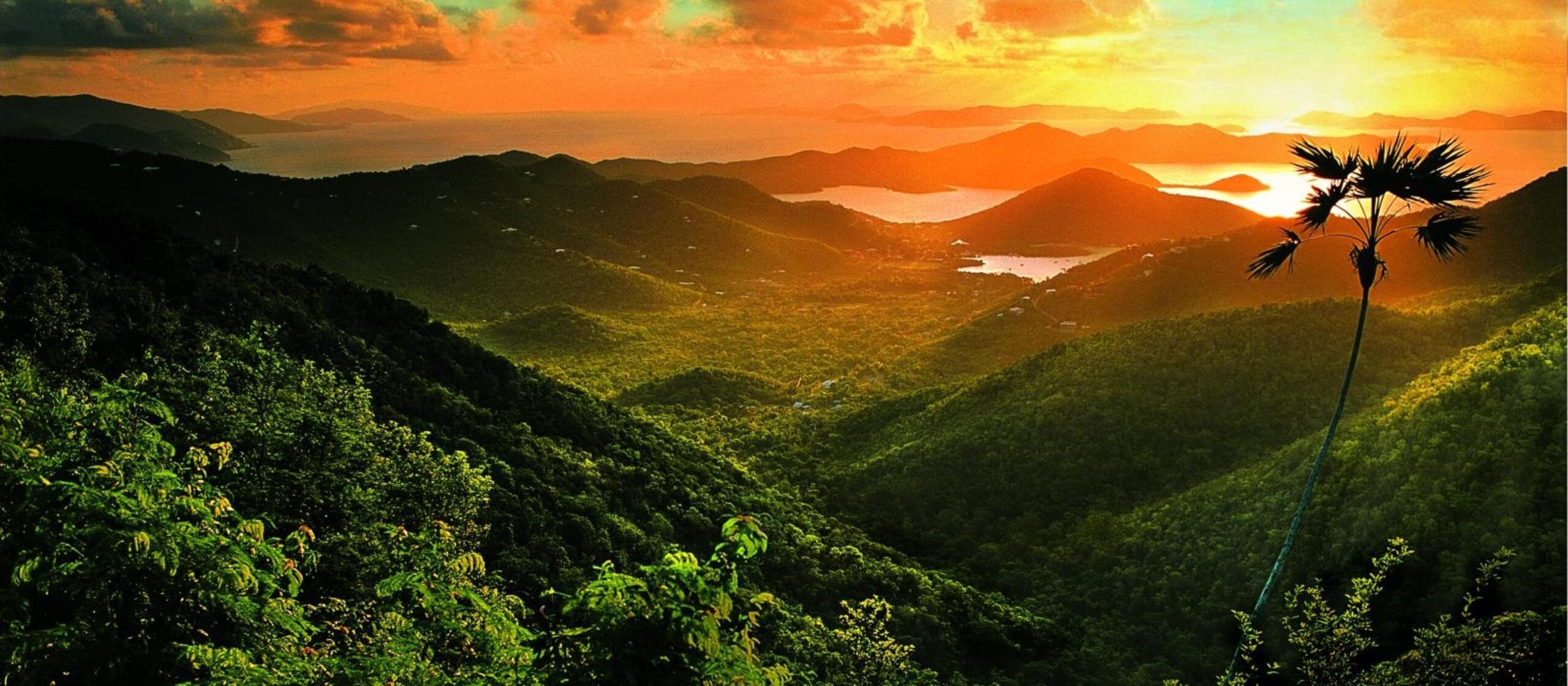Here are some tips for making the most of your outdoor exploration vacation to the U.S. Virgin Islands.
The three islands that make up the U.S. Virgin Islands—St. Croix, St. Thomas, and St. John—are located roughly 2,000 kilometers southeast of Miami, Florida, and are distinguished by turquoise waters, lush tropical woods, and beaches with coral sand. Covering approximately three-fifths of St. John and the majority of Hassel Island in St. Thomas’s Charlotte Amalie port (about six nautical kilometers away), the U.S. Virgin Islands National Park is home to 2,832 hectares of native plant and animal life, including 160 bird species and 800 plant species.
How to Travel There
There isn’t an airport on St. John, so getting to the national park involves making a few transfers. The easiest way to get there is to take a plane from a big American city to St. Thomas, from whence you can take a public or private water taxi. Maps of the 20 trails and attractions are available at the Cruz Bay Visitor Center, which is located 650 meters from St. John’s public ferry port.
Trekking in the National Park
Take a hike to see millennia of history revealed by pre-Columbian aboriginal American Indian civilization’s rock sculptures and artifacts. The 4-kilometer downhill Reef Bay Trail offers views of four Danish Colonial sugar farms that employed African slaves, as well as glimpses of Arawak Indian petroglyphs. Make reservations for a ranger-led hike, which concludes with a boat ride back to the visitor center, because the trail is rocky and steep.
Bring water, food, sunscreen, insect repellent, comfortable clothes, sturdy shoes, and a swimsuit in case you want to take a quick dip. The Francis Bay boardwalk leads to a salt pond for bird watching, while the Cinnamon Bay Trail offers boardwalk access through the old remains for gentler hikes.
National Park of the Virgin Islands
Play in the Caribbean
There are lots of areas to swim, kayak, snorkel, and dive at St. John’s 14 beaches. A well-liked snorkeling spot on the north shore is Waterlemon Cay, where visitors may observe conch, rays, turtles, and coral reef formations. Less people can be found at Little Cinnamon Beach, which is located on the North Shore to the west of Cinnamon Bay Beach, and Haulover “North” Beach, which borders the park on the east end of the island. The Westin St. John is home to Cruz Bay Watersports, a diving center that offers instruction, certifications, wreck dives, night dives, and snorkel trips.
At the park’s Cinnamon Bay campground, the Cinnamon Bay Watersports Center offers windsurfing lessons in addition to renting sailboats, kayaks, and other equipment. The Mixed Bag boats at the Westin St. John are a great place for serious sport fishing. They take groups in search of mahi-mahi, wahoo, and blackfin tuna.
Canoeing in Saint John
Where to Stay
Situated on the location of the former Rockefeller estate is Caneel Bay Resort, the park’s sole hotel. The opulent resort features seven beaches, thick vegetation, five restaurants, free sailboats, kayaks, paddleboards, and snorkel gear, and a large kids’ club, but no TVs or phones.
With features like TV and fast Internet, the Westin St. John Villas, located around one kilometer outside the park, makes it easier for visitors to stay connected. A full-service spa, many dining options, and a private boat service to St. Thomas are all featured on the resort.
What to Eat
American Indian and colonial African cuisines are combined to create Caribbean food. Rice, plantains, beans, cassava, cilantro, bell peppers, chickpeas, sweet potatoes, and coconut are common accompaniments to local seafood dishes. On St. John, eateries like Morgan’s Mango and Miss Lucy’s are known for their island-inspired cuisine, which includes Haitian “voodoo” snapper, conch fritters, and kallaloo, a fiery stew from the West Indies.


